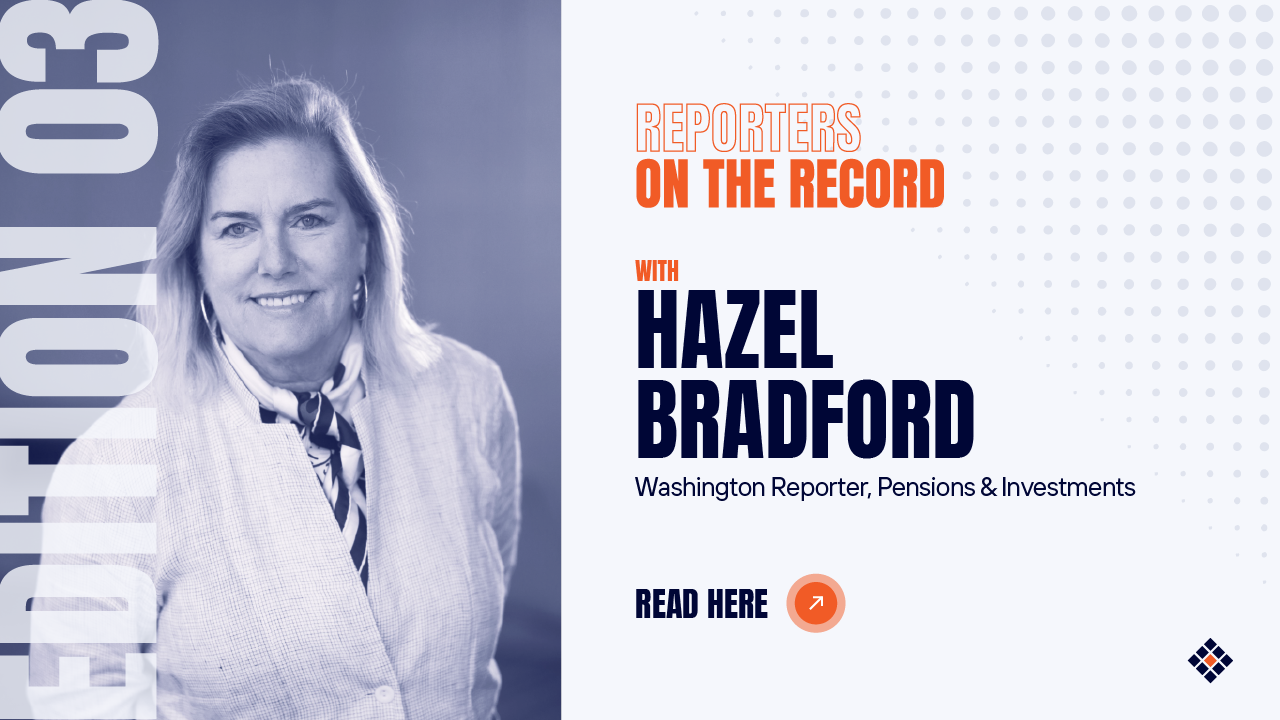Washington Reporter for Pensions & Investments Hazel Bradford has had a long career both as a journalist and a communications professional. Hazel shares with Forefront how her diverse work experiences has shaped her and gives us her take on Environmental, Social and Governance (ESG) investing.
If you don’t want to miss the next interview, sign up for our daily newsletter, the Forefront Fintech Digest.
What was your first job?
After college, I had several “job jobs,” but my first true and what I consider career-defining job was when I volunteered and then became executive director of a refugee assistance program throughout the state of Florida. It was a fantastic experience to learn how nonprofits and local politics work and ultimately how to get things done.
How did that lead into journalism?
This was my first “grown up job” where I had to deal with a lot of people. Part of it involved working with the press, which I really enjoyed. It made me realize that I wanted to be a journalist. I liked sticking my nose in other people’s business and then making important stories out of it, putting it into perspective for readers to understand.
Did you learn on the job or go to journalism school?
After the experience working on the statewide refugee program, I really didn’t feel like going back to school since I wanted to keep working in the trenches. I also wanted to live in Washington D.C because my sister was there, so I decided to see what I could get started because I really like learning on the job. I did look at a couple of journalism programs, but they seemed like a lot of theoretical study, which wasn’t right for me given the very active, lets-get-things-done situation I’d just come out of.
Are there any stories you’ve covered that have stuck out to you?
An early experience that comes to mind was when I was toiling away as an editorial assistant at McGraw-Hill World News. I got my big break when our correspondent covering the Department of State called in sick, so they sent me to a big briefing with an Assistant Secretary of State. The briefing was attended by a select group of very seasoned journalists. The reporter I was filling in for had given me some specific questions, so I couldn’t come back without those answers. But I was 25 and I choked, getting out-talked by the guys who knew what they were doing.
But when I was leaving at the end, I bumped into the Assistant Secretary of State in the coat room. So, I figured what the hell, and I just talked to him while he was putting on his coat. I said, “I know you know my colleague, and he asked me to ask these questions.” He answered them all for me, being very kind and generous with his time.
You’ve worked as a journalist, but you’ve also had a long career in communications, spending over 15 years as Communications Director at International Masonry Institute. How does this inform your current role at Pensions & Investments today?
There are a few different ways my previous experience impacts me. One of the biggest is that I try to be kind to those who are pitching me. Rather than just ignoring or deleting pitches that aren’t a fit, I do try to respond and point the person in the right direction. I think I’m probably a little more considerate of PR folks because of my past experience.
What makes a good pitch?
It begins with reading what I’ve written and what I cover and understanding that and not just sending a blind “Hey, I thought you’d be interested in this” pitch. Your pitch must be relevant to the reporter that you’re pitching. For P&I, PR professionals should read the publication every other week to really get a sense of who’s covering what subjects. One other bugbear of mine is when people start an email that says, “Just circling back.” PR professionals need to stop circling! Sometimes it’s not a fit – you need to know when to move on.
How do you see pension funds’ attitudes towards Environmental, Social and Governance (ESG) investing evolving over the next sort of say five years?
For large, sophisticated, institutional investors, it feels like we are at an inflection point. Increasingly, as BlackRock CEO Larry Fink’s recent annual letter exemplifies, it feels like these managers believe that ESG is not just a nice thing to do, but the financially responsible approach as well. For the institutional set, the release of that letter last month was a pretty big moment.
Do you think we’ll say fund managers re making real changes?
Fund managers are definitely making changes, but the question is whether this is just window dressing or is it really sustainable? Investors will need to dig deep to see how much there is to these efforts. In the case of Fink’s letter, it’s interesting to see that BlackRock’s attitude to climate change appears to be woven through everything they are doing now, and he lays out some of the steps they will be taking. One of the steps he notes is that BlackRock will divest itself of any company that has more than 25% of its revenue coming from coal-based generation. Now, that’s a very hard number – that’s not a feel-good stuff. In my opinion they will create real change with a signal like that, and that’s why I’m optimistic that the rest of the market will move too.
